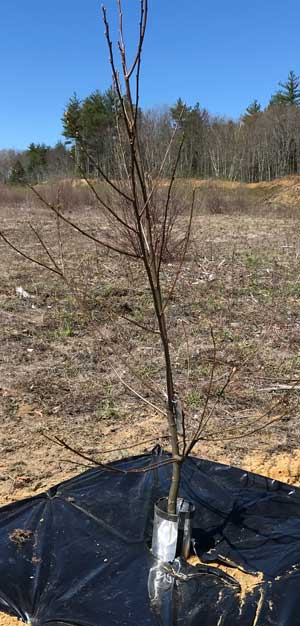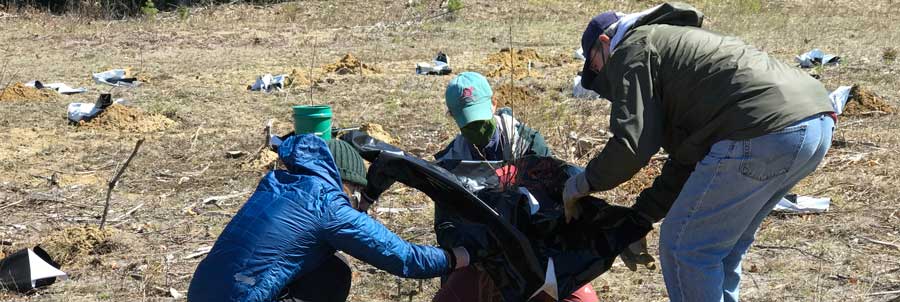Written by David Johnson
Photos by David Johnson
Their mission, should they choose to accept it: help return the American chestnut to its former glory.
It is May 1, 2021 and a group of volunteers are gathered at a SELT property. They are listening to a rundown of their day’s duties, prepared to take their marching orders on behalf of one of the most unique rescue missions in conservation history.
Today, they will be planting a series of American chestnut saplings in a small parcel of land that was carefully selected due to its soil makeup and sun and shade mix. This endeavor represents a small cog in a nationwide effort by the American Chestnut Foundation to generate a series of observable micro-forests. The purpose: to gather data on ideal planting locations, which will then be used for bold, future attempts to breed a new generation of chestnuts.
Because here’s the thing: American chestnuts, once dominant in North America and widely considered the finest chestnuts in the world, are few and far between.
A large deciduous tree and part of the beech family, the American chestnut was obliterated by chestnut blight, a fungus that was introduced from East Asia in the early 20th century. Some estimates put the American chestnut mortality rate in the first five decades since the blight between three and four billion.
To answer this existential threat, the American Chestnut Foundation was founded in 1983 to work on a path towards American chestnut rebirth and resilience. In 2005, the Foundation harvested its first potentially blight-resistant chestnuts and is currently undergoing observation, testing, and planting trials.
And that’s what led a small group of volunteers to this small field, shovels at the ready, poised to take part in a grand experiment to save the American chestnut.
THE VOLUNTEER VANGUARD

On the SELT side, Land Manager Parker Schuerman transported the trees in the SELT work truck and served as point person, helping coordinate the event.
“For us, management of SELT’s lands goes beyond what would be considered typical forestry and wildlife habitat management,” says Deborah Goard, SELT’s Stewardship Director. “Welcoming volunteers and groups like the American Chestnut Foundation to our properties is incredibly rewarding.”
Among the volunteers was a cadre of seven students from Dover High School and St. Thomas Aquinas School. Tim Elliott, a Dover High School math teacher and member of the American Chestnut Foundation, liaised with local teachers to bring the students to Two Rivers and pitch in.
“The American Chestnut Foundation likes to support events with young people,” he says. “I think the students enjoyed the planting and some have already asked me if we’re going to do it again.”
For now, it is time to wait and watch – and see if a small line of American chestnuts planted in Epping by a group of passionate volunteers will play
Click here to learn more about the American Chestnut Foundation and the
work it is doing to bring back the American chestnut tree.

